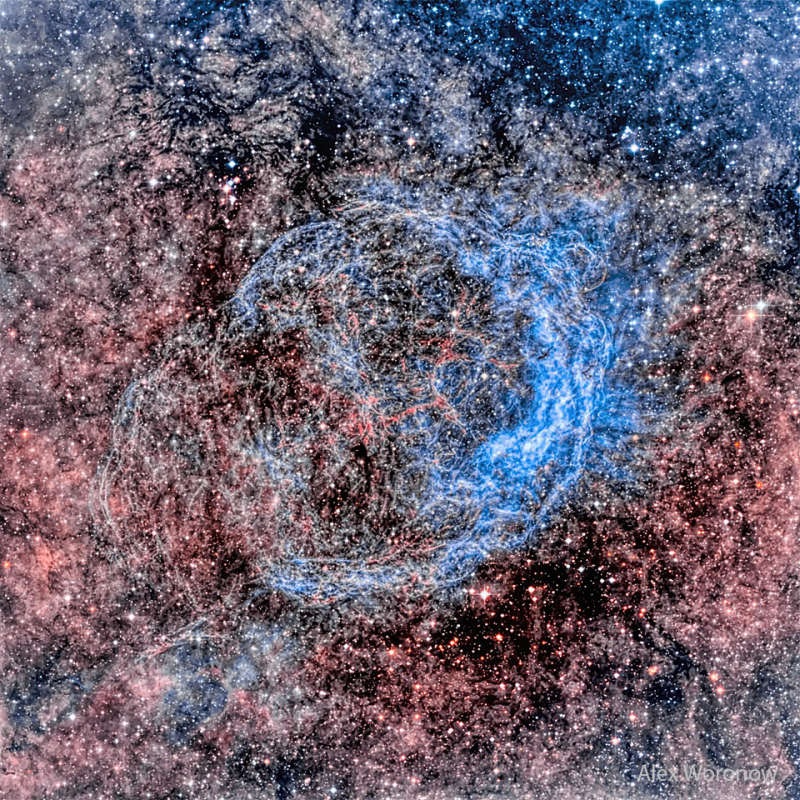Credit & Copyright: Alex Woronow
Explanation:
Why does the nebula around the star WR-18 shine brighter on one side?
Also known as
NGC 3199,
this active star and its surrounding nebula lie about 12,000
light-years away toward the nautical southern constellation
of Carina.
The featured deep image has been highly processed to bring out filamentary details
of the glowing gas in the bubble-shaped nebula.
The nebula is about 75 light-years across.
Near the nebula's center is a
Wolf-Rayet
star, WR-18, which is
a massive, hot, short-lived star that generates an intense and complex stellar wind.
In fact, Wolf-Rayet stars
are known to create nebulas
with interesting shapes
as their powerful winds sweep up surrounding
interstellar
material.
In this case, the bright right edge was initially
thought to indicate that a
bow shock was being
produced as the star plowed through a uniform medium, like a
boat through water.
Recent measurements and analyses, however, have shown the star is
not
moving quickly toward the bright edge.
A more likely explanation has
emerged that the
material surrounding the star is not uniform, but
clumped and denser near the bright edge.
1999 2000 2001 2002 2003 2004 2005 2006 2007 2008 2009 2010 2011 2012 2013 2014 2015 2016 2017 2018 2019 2020 2021 2022 2023 2024 2025 |
Yanvar' Fevral' Mart Aprel' Mai Iyun' Iyul' Avgust Sentyabr' Oktyabr' Noyabr' Dekabr' |
NASA Web Site Statements, Warnings, and Disclaimers
NASA Official: Jay Norris. Specific rights apply.
A service of: LHEA at NASA / GSFC
& Michigan Tech. U.
|
Publikacii s klyuchevymi slovami:
Wolf-Rayet star - zvezdy Vol'fa-Raie
Publikacii so slovami: Wolf-Rayet star - zvezdy Vol'fa-Raie | |
Sm. takzhe:
Vse publikacii na tu zhe temu >> | |
